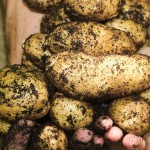We use cookies to make your experience better. To comply with the new e-Privacy directive, we need to ask for your consent to set the cookies. Learn more.
Potatoes - How to get a great crop!

Potatoes - How to get a great crop!
What could be nicer than digging up your own potatoes from the garden? They are a relatively easy crop to grow and will give you a high yield. One plant can produce a crop of about 10-15 potatoes.
Potato varieties are categorised by the length of time it takes for them to reach maturity. They are divided into the following groups:
Earlies: Very good if you only have a small area. As they are lifted earlier, they are less likely to encounter problems such as wireworms, slugs and blight. Earlies are ready 15 - 16 weeks after planting in March onward. Only plant when the conditions are right - be patient!
Second Earlies: Second Earlies take 16-17 weeks to mature after planting in April
Maincrops: Maincrops take 18-20 weeks to mature after planting in mid-April onwards. These take up the most space in the garden, but they are the best varieties to store. They also will have a higher yield.
Chitting Tubers
What does chitting mean? Chitting is basically another word for sprouting. By exposing the seed potato to light and a small bit of warmth you are encouraging growth. The eyes of the potato will start sprouting - the sprouts should be small, knobbly, and green/purple in colour. If you end up with long, white coloured sprouts, it means there’s not enough light.
Why do you chit potatoes? By getting the potato to sprout you have started off the growing process so that the plants will have a head start when you put them in the soil. In theory you will then get your potatoes a bit earlier. Is especially good with early potatoes when it would be too cold to plant out in Jan/Feb.
How to Chit Potatoes
Potatoes will start chitting when exposed to light and heat, so place them somewhere warm and light. A temperature of around 8ºC-10ºC is fine. A porch, conservatory or a garage, getting a bit of heat from your house is ideal, or you could use your greenhouse if you’ve got one. Avoid locations that might get frost.
Place the seed potatoes in a single layer with a large amount of eyes facing up. If you’ve only got a small amount of seed potatoes, recycling old egg boxes for this purpose is ideal. For larger amounts, use seed trays or wooden boxes. Keep the tubers upright by supporting them against each other.
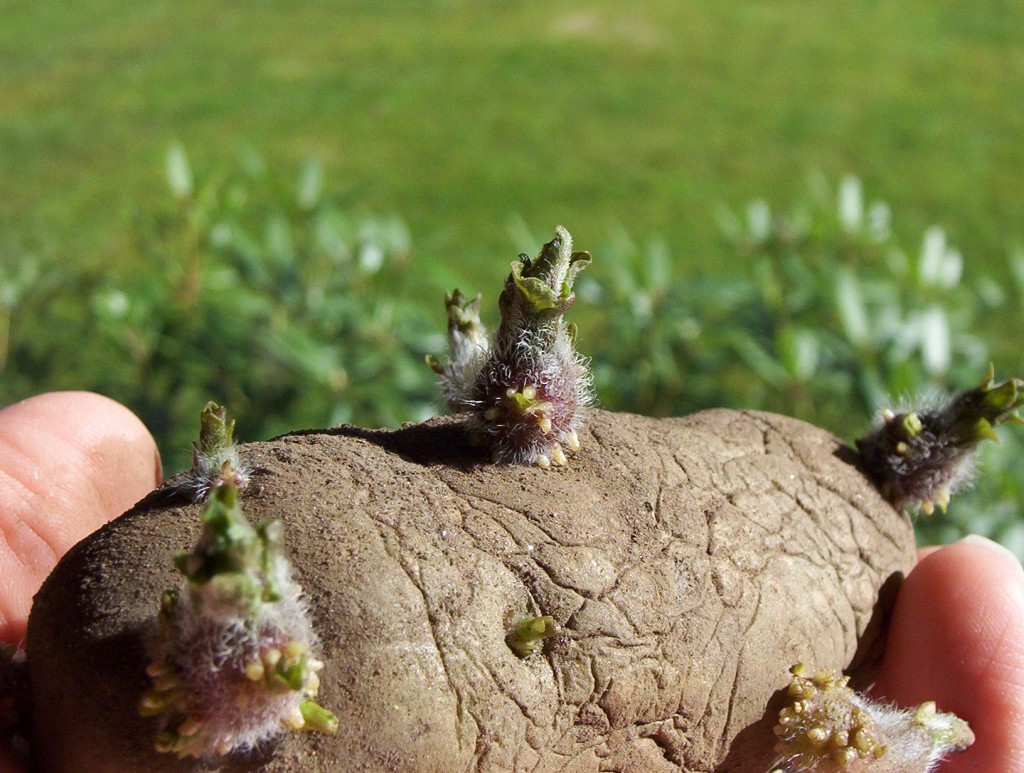
Once your seed potatoes have some good sized ‘chits' on them (about 1-2cm), and the conditions are right, it’s time to plant. The sprouts should be small, knobbly, and green/purple in colour. If you end up with long, white coloured sprouts, it means there’s not enough light.
Soil Preparation
Potatoes should be grown on deep, fertile soil that is well drained and contains plenty of organic matter. Choose a sunny position in the garden but avoid exposed sites and frost pockets, these delay the developing foliage. Potatoes need potash so dig in plenty of well rotted manure (or Topmix Complete 4-3-7 ), compost and seaweed or approved organic potash fertiliser. Do not add lime - potatoes dislike lime and its presence in the soil appears to encourage scab.
Planting Potatoes
- Planting can commence as soon as the soil is warm enough - the end of March for earlies and April/May for maincrop.
- Dig trenches 12/15cms deep, putting the soil to one side.
- Place the potatoes in the trench with the shoots pointing upwards, cover with soil.
- You can also plant potatoes using a potato planter.
- Don't plant too deep as it is colder for the young plants. Cover with horticultural fleece or straw if frost is forecast.
- Plant Earlies 30cm apart in rows 40-50cm apart.
- Plant Maincrops 40cm apart in rows 75cm apart.
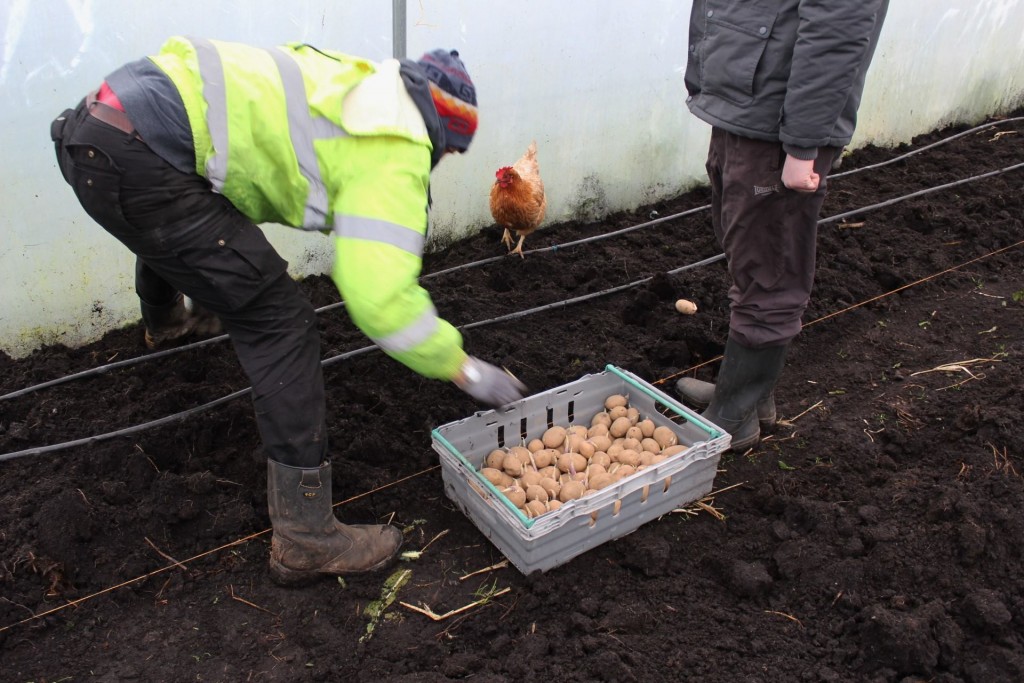
General Care
When the shoots appear, use a draw/ridging hoe to pile up the soil over them (earthing up). The shoots should be just buried and a small ridge created on either side. This should be done about three times, or until the haulm (foliage) is too big to cover. Earthing up protects the tubers from frost and reduces the number of green potatoes.
It is particularly important that potatoes have adequate water. Unless there is a regular, ample rainfall, the size and quality of the crop will be reduced.
To increase yield and quality you can give the plants a potash rich liquid feed every two weeks - Alternate Liquid Seaweed and Vinasse applications are recommended.
Blight
Potato Blight is a serious fungal disease that can wreak havoc with your potato crop. It can be avoided but for domestic growers there is no way of treating the disease once it has made an appearance in your crop.
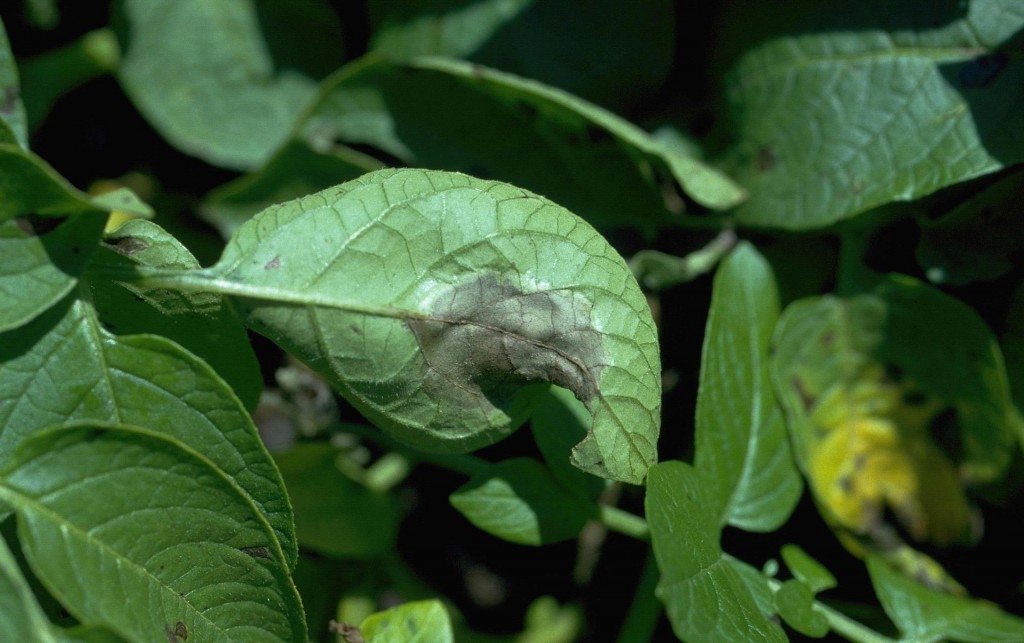
What is potato blight?
Potato blight is caused by a fungus-like organism Phytophthora Infestans. It spreads rapidly in warm humid weather causing collapse and decay of the foliage and rapid tuber rot.
Blight spores are produced on infected leaves and are dispersed by the wind to neighbouring plants and gardens. Spores spread quickly on damp leaf surfaces and during wet weather they are washed off leaves and down the stems into the soil where they can infect the developing tubers.
How do I recognise potato blight? Healthy leaves will develop brown patches and effect the whole leaf which will soon dies off. Infected potato tubers will have a brown discolouration on the skin and a brown marbled appearance to the flesh when cut. The tubers are firm initially, but will rot in storage.
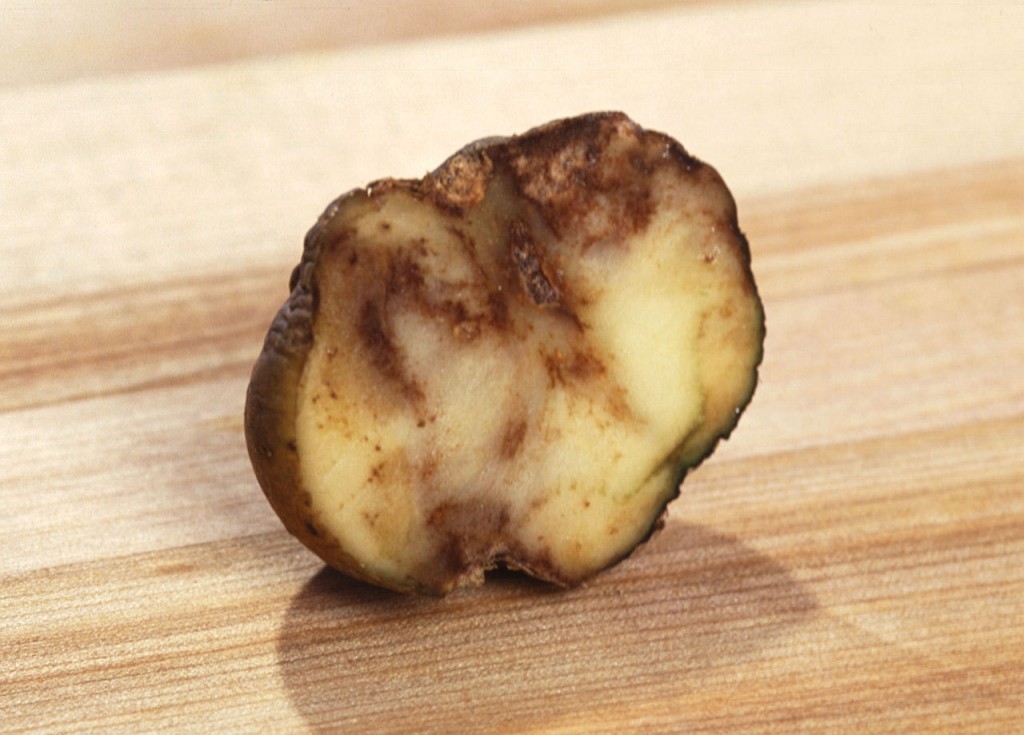
How to Control Potato Blight
- Grow early varieties - these will be harvested before blight arrives.
- Grow blight resistant varieties - there is now quite a large range to choose from.
- Hygiene - Make sure all tubers are removed from the soil when you dig up your crop. Most compost heaps will not be hot enough to kill the blight spores - instead either burn infected material or bury it at least 45cms deep.
- Increase spacing between rows to help ensure that leaves will dry faster after rain.
- Practice crop rotation.
- Remove any infected leaves as soon as you see them - this will help slow down the progress of blight.
- When infection levels reach about 25 percent of leaves affected or marks appear on stems cut off the foliage (haulm) near soil level and rake up and dispose of carefully. When the skin on tubers has hardened, after about two weeks, the tubers can be dug up.
- Harvest in dry weather.
- Make sure you plants are strong and healthy. You can spray with Herfomyc - a crop stimulant which will encourage the plants to produce their own defence against blight; or Horsetail - made from equisetum extract - has plant strengthening and anti fungal properties.
- Check your stored tubers for signs of rot regularly to prevent further losses.
For more information on blight resistant potatoes and how they are bred, check out our blog post.
Harvesting and Storage
Early potatoes can be harvested when you think they are big enough - normally when the first flowers start to appear. Cook immediately so that the flavour is retained. Maincrop are best lifted as the foliage starts to die back in the Autumn. Late Maincrop should be left in 'till October even if the haulm has been cut off as a blight control. This will improve flavour and ensure that the skins are properly matured.
Maincrop potatoes should be stored in potato sacks in a cool, dark, frost free shed. Check regularly for signs of rot. Keep an eye out for vermin. The ideal temperature for storing potatoes is between 5° and 10°C. Too warm will reduce storage life but too cold can be worse. Below 5°C the starch begins to turn to sugars and the potatoes will develop an unpleasant strange sweetish taste. Bringing them into the warm (around 15°C) for a week or two will usually cure this. If the temperature has fallen to around freezing or below, the potatoes will not only taste strange but become mushy and probably start to rot when the temperature rises.
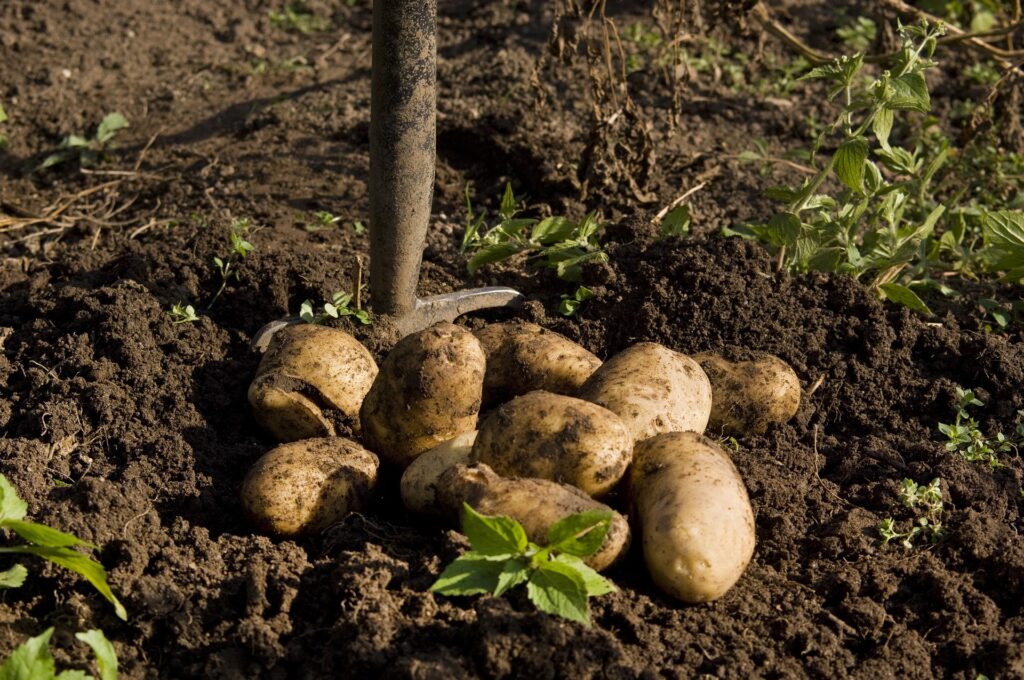
Browse our full selection of seed potatoes here.

